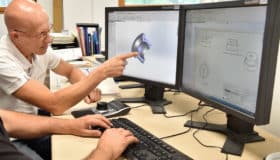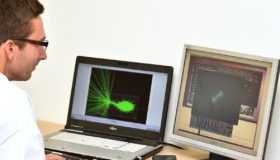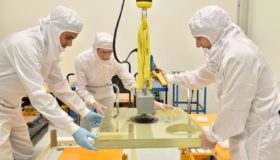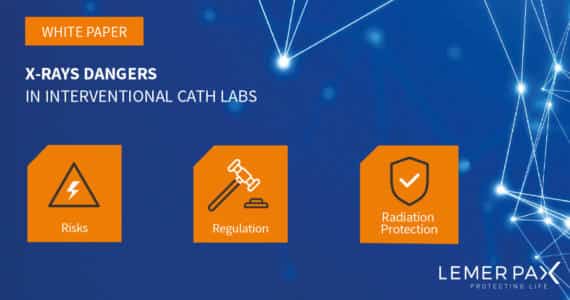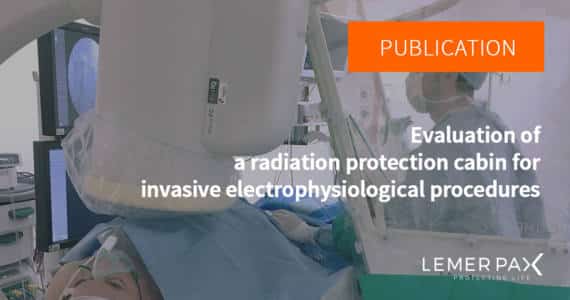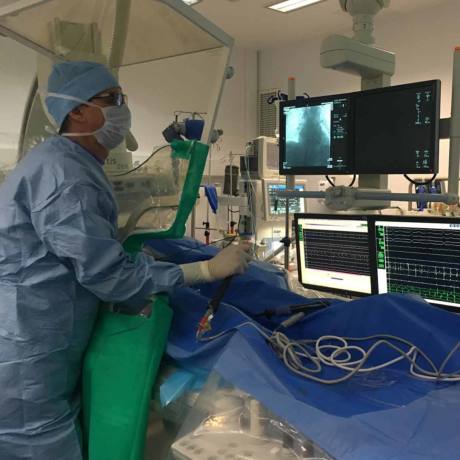
Significant reduction of radiation exposure using a protection cabin for electrophysiological procedures
Christiana Schernthaner, Franz Danmayr and Bernard Strohmer
Paracelsus Private Medical University, Salzburger Landeskliniken, Departement of Cardiology, Muellner Hauptstrasse 48,
A-5020 Salzburg, Austria. Herbert Open Access Journals.Octobre 2013
Fluroroscopy is the main visualization technique for electrophysiological (EP) procedures. A radiation protection cabin (RPC) shielded with 2mm lead-equivalent walls was tested as an alternative protection tool.
OBJECTIVE:
The main objective was the comparison of radiation doses inside the RPC versus outside the RPC for different ablation procedures.
METHOD & RESULTS:
138 patients undergoing a variety of ablation procedures :
- Supra-ventricular Tachycardia (n=75)
- Atrial flutter (n=32)
- Atrial fibrillation (n=17)
- Ventricular Tachycardia (n=14)
To assess the scattered radiation to the operator inside the RPC, en electronic personal dosimeter (EPD) was placed at the neck level of the operator.
A second EPD was located outside the RPC at 150cm height from the floor, to record the presumable head radiation dose.
To gain access to both femoral veins and the right jugular vein all vessels punctures and the introduction of sheaths were performed before placement of the cabin.
All ablation procedures were performed with the RPC in use without compromising catheter manipulations of the operator.
- Recorded doses outside/ inside the RPC :
- Outside the RPC : 135Sv
- Inside the RPC : at sensitivity threshold or background levels
- Median estimated at 0
Total accumulated dose outside/inside the RPC (for all 138 patients) :
- 37 833 μSv outside the RPC
- 30 μSv inside the RPC
The dose reduction to the operator was highest for AF ablations when comparing values outside versus inside the cabin (354 vs 0.5μSv respectively ; p<0.001).
CONCLUSION:
The use of the RPC allowed the operators to perform a variety of catheter ablations without hindrance and negligible radiation.
There were highly concordant low dose values measured inside the RPC over a clinically relevant wide spectrum of procedures.
The doses measured outside the RPC confirm that electrophysiologists are exposed to relatively high dose levels, particularly during AF ablations.
Use of a RPC represents a major benefit over a lead apron and contributes to a significant dose reduction as low as reasonably achievable (ALARA principle).
